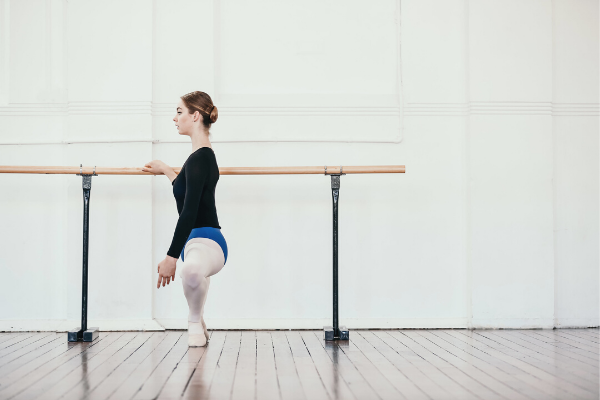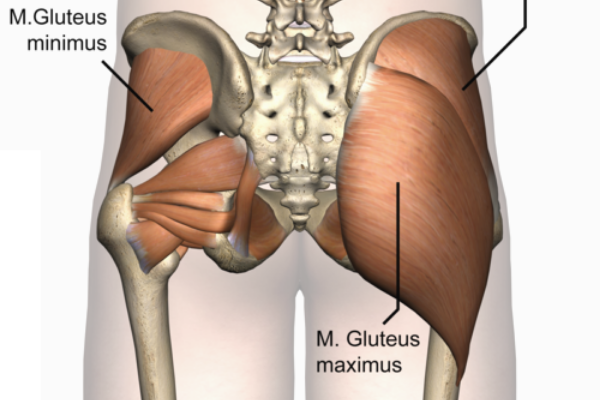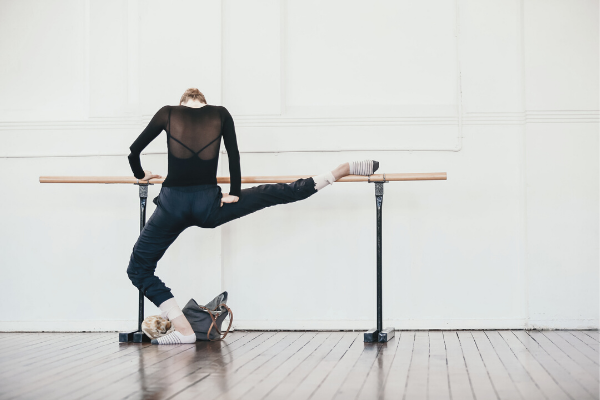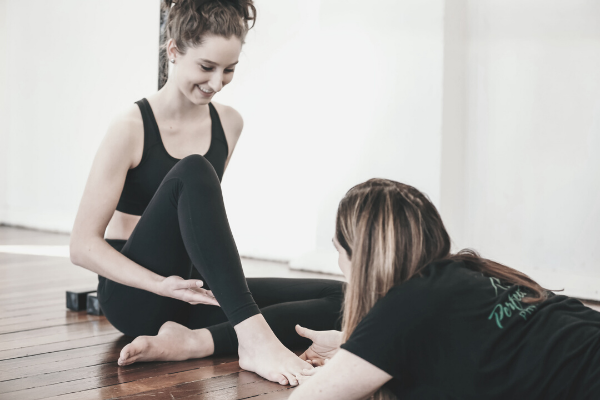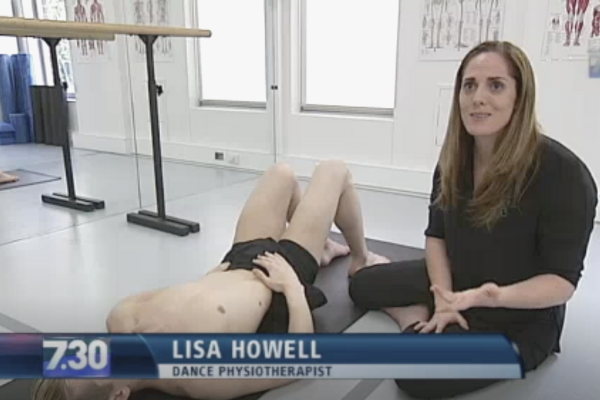Cushion Squeezes
Many dancers struggle with endurance of the deepest inner thighs, which can be a big factor in many hip issues. The Cushion Squeezes exercise is one of my favourites for addressing this issue. It involves using a small ball, which is a wonderful piece of equipment for any dancer and can be used for many beneficial foot, turnout, and core exercises. If you don't have one of these balls you can use a small pillow for this exercise.
- Start by lying on your back, with the knees bent and the feet reasonably close together. Place the ball between the inner thighs, quite close to the groin. Avoid placing between the knees as this changes the pattern of activation.
- Make sure you are in neutral spine with a gentle lift through the base of the spine, and a gentle drawing in and hollowing of the low pelvis, without flattening the back. Keep the shoulders nicely open and relaxed.
- Place your fingertips across the top of your thighs to check for gripping with the hip flexor muscles. This is very important, as a lot of people tend to grip excessively with these muscles when doing stability exercises. Especially if you have had issues with the hips clicking, or getting very tight, this may be a challenging exercise for you.
- Gently squeeze the ball, bringing the thighs together in parallel, rather than squeezing from the knees.
- Hold for 3 slow breaths, allowing a gentle rise and fall in the low abdomen, constantly checking to see that you remain relaxed across the front of the hips. Then, slowly release the inside thighs, but maintain pelvic floor control. If you feel the inside thighs start to tremble a little, this is OK. You are just using the deep stabilising muscles in a way they probably have not worked before!
- Aim to build to 15-20 repetitions, each with a 3 breath hold. Initially you may only be able to manage 3-4 repetitions, but this is completely normal. Always prioritise quality over quantity in this style of training.
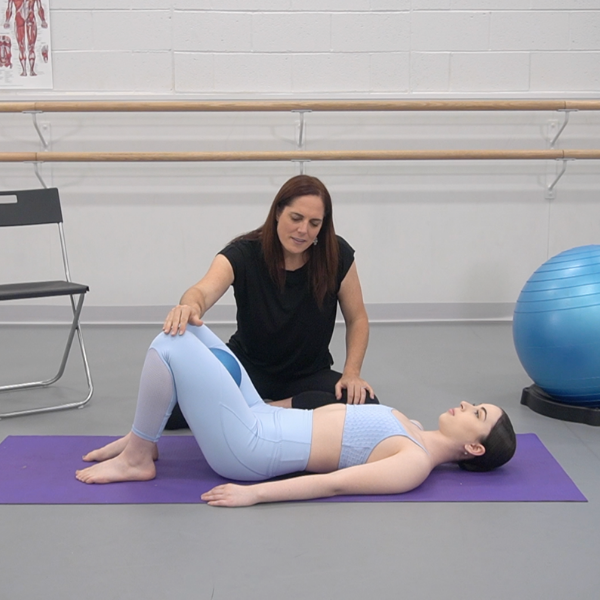
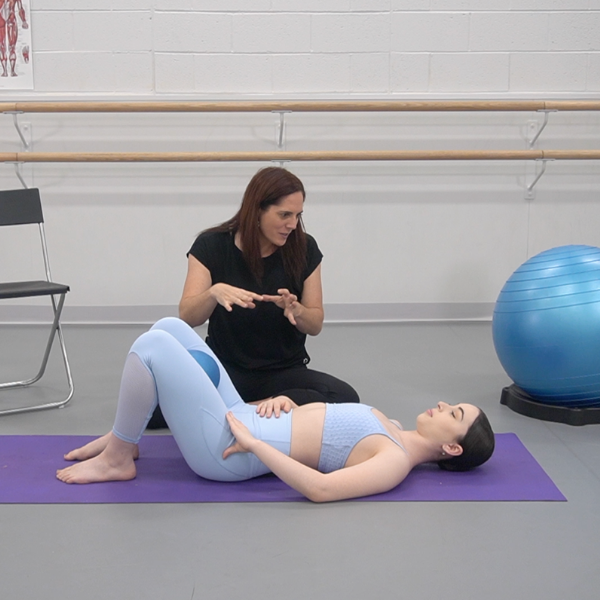
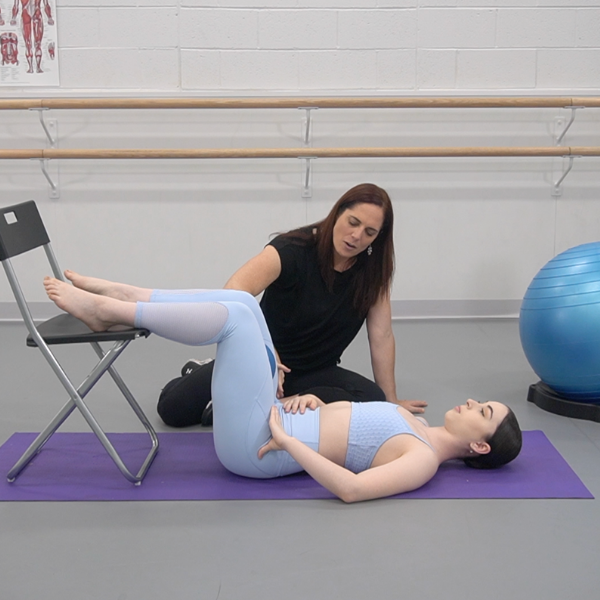
Cushion Squeezes with Extension
If you can do the first variation of this exercise keeping the front of both hips relaxed for 15-20 repetitions, you can move on to the advanced stage. Please note that it is ok to feel the front of the working hip come on in this exercise. You cannot keep it fully relaxed, as the quadriceps need to activate to extend the knee. However, do try to still keep the supporting side relaxed at the front of the hip.
- Squeeze the inside thighs as for the first exercise and then straighten one leg, maintaining the squeeze of the ball with the deep inside thighs.
- Slowly rotate the thigh bone in the socket, and you will feel the tension move from the inner thigh of the working leg around into the turnout muscles. Keep the hips square.
- Rotate the leg back into parallel, and then replace the foot down onto the mat.
- Maintain the squeeze, and then extend the opposite leg to repeat on the other side. Turnout, then bring the leg back into parallel, keeping the inner thighs gently squeezing, and then replace the foot down to the mat.
- Slowly release the inner thigh contraction, but try to maintain the deep back and pelvic floor control, rather than relaxing everything.
NB: When you go to turn the working leg out, make sure that you do not twist the pelvis. Your hips must stay square and straight, with the pelvis and spine in neutral.
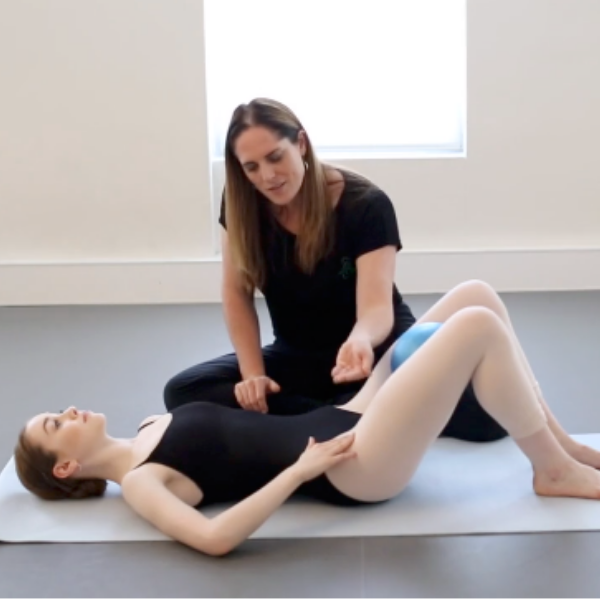
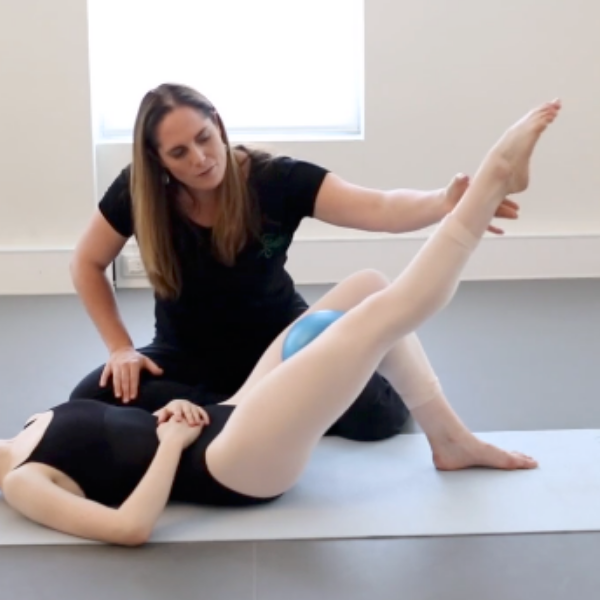
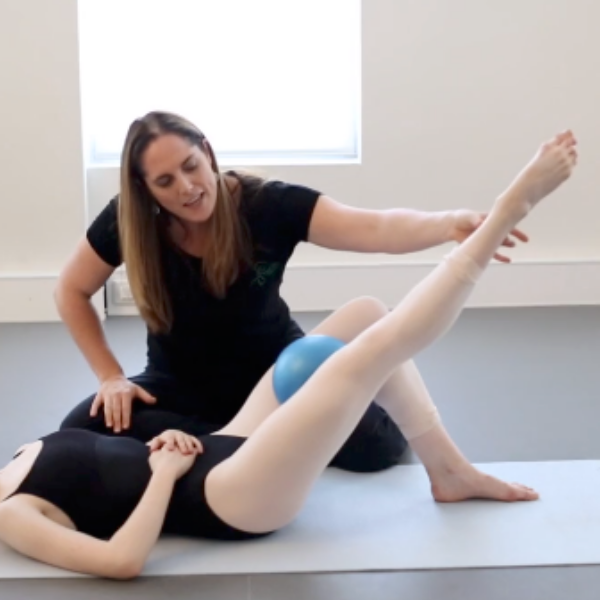
Injury Resources
- Will I Ever Dance Again Program: This program is perfect for any dancer who is unable to train at full capacity, whether this is due to a foot injury, surgery, an accident or illness outside of the studio. It helps you build back to full capacity gradually, while maintaining strength, flexibility and control in the rest of the body.
- Level One Dance Teacher and Therapist Training: This unique course covers a multitude of assessment and treatment techniques to individualise a dancers training. With special focusses on Postural Control, Core Stability, Flexibility, Basic Classical Technique, The Dancers Hip, Allegro, Spinal Mobility and Arabesques, it is suitable for anyone working closely with dancers.



